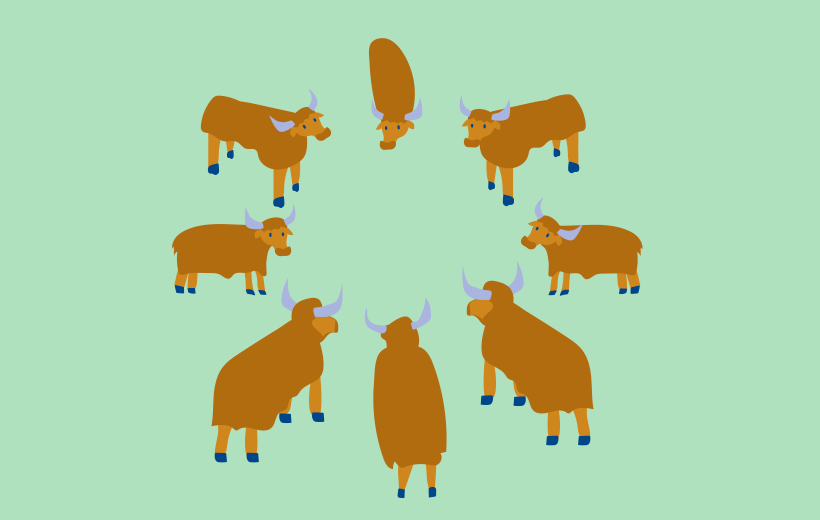Exploring Awareness, Awareness Training
By Tergar Meditation Community • 5 min read
By Tergar Meditation Community • 5 min read
The golden thread that runs through all of the Joy of Living is awareness. Mingyur Rinpoche introduces us directly to awareness by virtue of a practice he calls “open awareness.” To use the traditional analogy of the ocean and the wave, this is an introduction to the ocean — the vast, clean, pure expanse that is our inheritance. It is our abiding nature, always there, and can never be made better or worse. This is who we truly are.

Then we are introduced to the waves of the ocean that, when unrecognized, can obscure this fundamental awareness. The waves in and of themselves, we learn, are nothing other than awareness. As the ocean and waves are both wet, they are both water. But usually we only see the waves and get faked out by them.
We begin to work with this on a very practical level as we build a meditation practice. We soon encounter the experience of a racing, distractible “monkey mind,” and our usual tendency is either to try to force it to calm down or to let it lead us down any mental rabbit hole it chooses. In Level One, though, we learn to change the game completely by giving the monkey mind a job. Instead of trying to block out the distractions that naturally arise while we’re meditating, we use them as supports for developing meditative awareness. Because awareness is our essential nature, we can connect with it anytime, anywhere, under any circumstances, and eventually turn any experience into our friend.
As we move into Level Two, having discovered mind and its world, Mingyur Rinpoche uses the analogy of having gone into a room. We put the light on in the room, and now we can begin to discover the qualities of this room. As we begin to work with our meditation practice, one of the first qualities that begins to develop is the sense of warmth. When we talk about warmth, we are talking about loving-kindness and compassion.
In the Buddhist tradition, the meaning of love is the desire for happiness for yourself and others. Compassion means the desire for yourself and others to be free of suffering. In Level Two, Mingyur Rinpoche teaches that these are the twin engines that drive all sentient beings, that the animating force behind each and every action, from opening the fridge to blinking our eyes, is an expression of one or both of these desires. Even monkey mind’s wackiest habits, its most egregious mistakes, are attempts to be happy and avoid suffering. Level Two explores the principle that far from being some kind of discipline we need to impose on our bad monkey mind to get it to behave, love and compassion are actually inherent qualities of awareness.
“We don’t need to look outside of the present moment to find inner peace and contentment; when experienced with awareness, everything becomes of a source of joy.”
– Mingyur Rinpoche –
In Level Three, we discover monkey’s instinctual habit of going out and grasping whatever it finds and pulling towards it or pushing away from it. With this grasping, we have created a kind of prison and put ourselves into it. We begin to see that this world that we live in is actually a construct that we have constructed and that on the basis of how we perceive the world, we struggle with it.
By drawing on traditional techniques of analytical meditation, Level Three dispels the clouds of misperception with wisdom. Mingyur Rinpoche’s teachings in this level challenge you to interrogate your habitual view of things as permanent, singular, and independent. By breaking specific experiences down into smaller and smaller components of time and activity, we gain firsthand understanding that all phenomena are actually impermanent, multiple, and interdependent. Upending these default assumptions about the way the world is creates space for wisdom to take their place.
Mingyur Rinpoche’s unwavering intention in all three levels is to help us develop a working familiarity with awareness. The idea is that as time, and our practice, goes on, our mind will naturally return on its own to that vast, spacious realm. Experiences of all kinds will continue to happen in our life, thoughts and feelings will continue to come up, but we’ll be able to view them from a more expansive perspective. This makes it possible to live a life rooted in well-being — regardless of the inevitable ups and downs of experience. This lasting, fundamental well-being is what is meant by “joy” in the Joy of Living.
Learn meditation under the skillful guidance of world-renowned teacher Yongey Mingyur Rinpoche at your own pace.

Tergar Meditation Community supports individuals, practice groups, and meditation communities around the world in learning to live with awareness, compassion, and wisdom. Grounded in the Tibetan Buddhist lineage of our guiding teacher, Yongey Mingyur Rinpoche, our online and in-person programs are accessible to people of all cultures and faiths, and support a lifelong path toward the application of these principles in everyday life.

This heartfelt reflection traces fifteen years of building Tergar Puebla—a community shaped not by perfect plans, but by fire, friction, friendship, and the living practice of the teachings.

A student shares about her experience going through the Exploring Buddhism (Abhidharma) transmission.

The Dorje Drolo teachings are considered a terma, a Tibetan word for a hidden teaching revealed by a treasure revealer.
If you enjoyed reading our articles, please join our mailing list and we’ll send you our news and latest pieces.